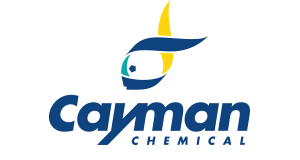Pelargonidin (chloride), CAS 134-04-3
Pelargonidin (chloride), CAS 134-04-3
SKU
CAY19753-10
Packaging Unit
10 mg
Manufacturer
Cayman Chemical
Availability:
loading...
Price is loading...
Shelf life (days): 1460.0
Formulation: A crystalline solid
Formal Name: 3,5,7-trihydroxy-2-(4-hydroxyphenyl)-1-benzopyrylium, monochloride
Purity: ≥95%
Formula Markup: C15H11O5 / Cl
Formula Weight: 306.7
CAS Number: 134-04-3
Notes: Pelargonidin is an anthocyanidin that has been found in P. granatum and has diverse biological activities.{61058,61059,61060,61061} It scavenges superoxide anions in cell-free assays (IC50 = 130 µg/ml) and inhibits hydrogen peroxide-induced lipid peroxidation in rat brain homogenates (IC50 = 85 µM).{61058} Pelargonidin (3 mg/kg) reduces serum levels of alanine aminotransferase (ALT) and aspartate aminotransferase (AST), hepatocyte apoptosis, and hepatic levels of IL-1β, IL-6, TNF-α, and TGF-β in a mouse model of hepatotoxicity induced by acetaminophen (Item No. 10024).{61059} It increases survival and reduces pulmonary fibrosis and leukocyte infiltration in a mouse model of LPS-induced endotoxemia.{61060} Pelargonidin (0.04-0.4 mg/kg) reduces serum levels of nitric oxide (NO), TNF-α, and IL-6 and increases renal myeloperoxidase (MPO), superoxide dismutase (SOD), and catalase (CAT) activities, as well as increases survival, in a mouse model of cecal ligation and puncture-induced sepsis.{61061} It also decreases escape latency in the Morris water maze, reduces hippocampal malondialdehyde (MDA) levels, and increases hippocampal acetylcholinesterase (AChE) activity in a rat model of Alzheimer's disease induced by amyloid-β 25-35 (Aβ (25-35); Item No. 24155).{61062}
Formulation: A crystalline solid
Formal Name: 3,5,7-trihydroxy-2-(4-hydroxyphenyl)-1-benzopyrylium, monochloride
Purity: ≥95%
Formula Markup: C15H11O5 / Cl
Formula Weight: 306.7
CAS Number: 134-04-3
Notes: Pelargonidin is an anthocyanidin that has been found in P. granatum and has diverse biological activities.{61058,61059,61060,61061} It scavenges superoxide anions in cell-free assays (IC50 = 130 µg/ml) and inhibits hydrogen peroxide-induced lipid peroxidation in rat brain homogenates (IC50 = 85 µM).{61058} Pelargonidin (3 mg/kg) reduces serum levels of alanine aminotransferase (ALT) and aspartate aminotransferase (AST), hepatocyte apoptosis, and hepatic levels of IL-1β, IL-6, TNF-α, and TGF-β in a mouse model of hepatotoxicity induced by acetaminophen (Item No. 10024).{61059} It increases survival and reduces pulmonary fibrosis and leukocyte infiltration in a mouse model of LPS-induced endotoxemia.{61060} Pelargonidin (0.04-0.4 mg/kg) reduces serum levels of nitric oxide (NO), TNF-α, and IL-6 and increases renal myeloperoxidase (MPO), superoxide dismutase (SOD), and catalase (CAT) activities, as well as increases survival, in a mouse model of cecal ligation and puncture-induced sepsis.{61061} It also decreases escape latency in the Morris water maze, reduces hippocampal malondialdehyde (MDA) levels, and increases hippocampal acetylcholinesterase (AChE) activity in a rat model of Alzheimer's disease induced by amyloid-β 25-35 (Aβ (25-35); Item No. 24155).{61062}

 Deutsch
Deutsch










